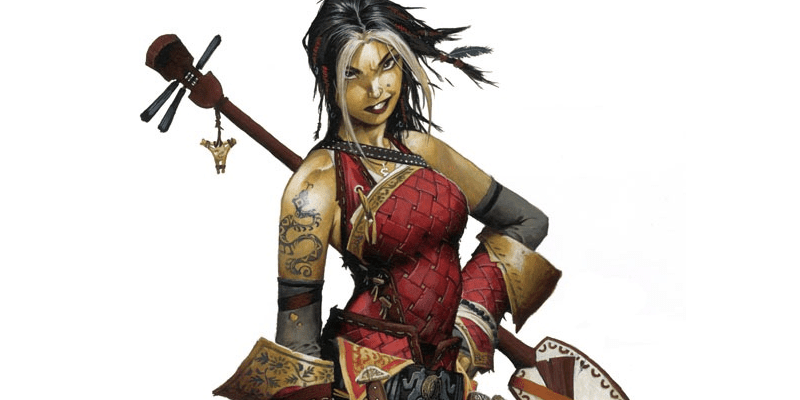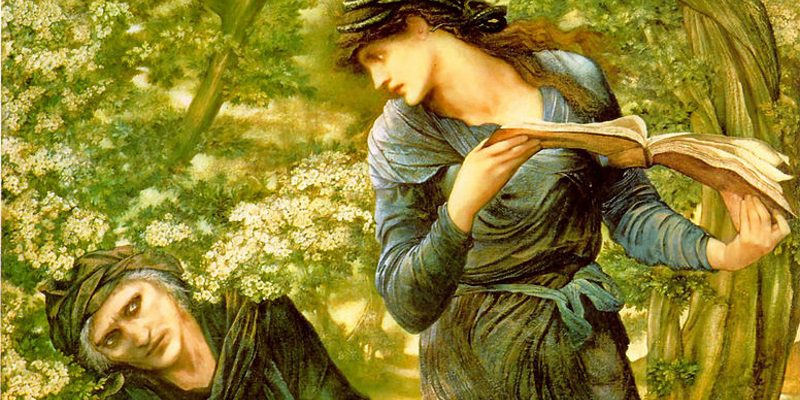The Bard Class, Part Four

Welcome back to my ongoing eccentricity obsession series about the Bard class. This time, I’ll be talking about Fourth Edition. I suspect that some percentage of my readers, devilishly attractive lot that they are, despise all things related to Fourth Edition as the work of the unbeliever, while others praise it with the voices of angels, et cetera; this isn’t the place for an edition war, and let’s leave it at that. Within its context, the 4e Bard is objectively better than earlier versions of the Bard are within their own context.
I don’t want to harp on this, but the 4e bard plays second fiddle to no one. If I had to piccolo point of the 4e iteration, though, I’d say that marching to the drum of the Arcane Leader role means that it doesn’t feel like a fighter/rogue/(some species of spellcaster) quite as much anymore. What has come down the pipes instead is a very close cousin to the Warlord – it shares more of the Warlord’s emphasis on movement and setting up enemies as healing piñatas than other Leader classes do. Accordionly, the player in my long-term 4e campaign that played the bard chose that class right after we canceled the campaign before it, where he’d been playing a warlord. Probably the biggest difference between the two is that the Bard can justify teleportation, and the Warlord can’t.
Shofar, I haven’t gotten into specifics. Time for me to change my tune:
- Skill selection is hugely generous – getting five trained skills in 4e is a pretty solid deal, and they have very few restrictions on their selection.
- Bardic Training lets bards cast rituals, and also allows them to cast one ritual per day (more at higher levels) that is below their character level without spending spell components. I kantele you that the point of this is to make bards the preferred out-of-combat utility casters. It’s not just about saving you a pile of lute, though; the book introduces rituals that only bards can cast, and these constitute a bunch of partly-hidden class abilities.
- Bardic Virtue is the power that distinguishes between the different Bard builds. The Player’s Handbook 2 has Cunning and Valor, while Arcane Power has Prescience. These options each carry a quite a different theme:
- Cunning, unsurprisingly, is for trickster bards. They deliver many of their attacks with wands, and string the enemy along by manipulating their minds. The Virtue of Cunning grants forced movement when an opponent misses a nearby ally, and so requires more consideration to use well than other Virtues.
- Valor is for Skald types with a lot of brass, and has the very strongest Warlord overtones. (It’s distinct from but thematically identical to the Skald build, see below.)
- Prescience turns the Bard into a Fate witch/Zen archer kind of deal. It’s a theme I don’t really recall from 3.x, and we haven’t seen yet in 5e: bard pitched as combat diviner.
- Majestic Word is the Bard’s twice-per-encounter heal (thrice at later levels). It grants a one-square slide in addition to its healing. This power is perfectly on par with similar abilities in the other Leader classes.
- Multiclass Versatility and Skill Versatility both make sure the Bard retains some of its jack-of-all-trades theme. Skill Versatility’s +1 to untrained skills is… probably not enough to really notice, for most skills.
- On top of being able to class-dip widely with this feature, bards also have an Epic-Tier feat that lets them pick up two multiclass feats for the price of one feat slot. This sounds insane, except that in a sense you’re trading an epic-tier feat for two heroic-tier feats, which is fine I guess?
- The Combat Virtuoso feat is also a must-have for any bard looking at attack powers from a non-Charisma-based class. In a sense it’s the epitome of solving design problems with feat taxes.
- Song of Rest makes Bards probably the best out-of-combat healer, unless your DM takes the view that healers can use their per-encounter healing, wait five minutes to reset it, and use it again until everyone has healed as much as they care to heal. (I don’t recommend this interpretation.)
- Words of Friendship gives Bards an edge in social skill challenges, though just once in the challenge. This is the kind of power that raises a lot of questions about how obvious its use is to its target. Are there motes of power in the air when you speak, or do your words simply carry more weight than usual, a la Saruman the White?
Anyway, that’s it for class features. Everything else is spells (as an arcane class, all of a bard’s powers are called spells, no matter how the flavor works out). The builds more or less favor wands, melee weapons, and bows separately, but there’s not any treble in primarily taking melee or bow powers and dabbling in wand powers – the Bard doesn’t have any of the split-stat mess that shows up in the Cleric, Paladin, and Warlock, and to a lesser extent the Ranger.
While songs, poems, and stories remain the bass for bardic magic, the tone of the 4e bard’s spells goes some very different places than 3.x’s did. The 3.x bard couldn’t find fire, cold, or lightning damage in a volcanic snow-and-lightning storm, is what I’m saying, while the 4e bard embraces its Arcane source and offers a smattering of fire, cold, and lightning effects. This shift in tone is kind of a big deal, and I think it’s another dividing line between people who liked 4e and people who didn’t – do you demand that bardic magic be subtle, or are you okay with big, obvious particle-effect spells? I tend to favor subtlety in bardic magic, but I’d be a lyre if I said I didn’t love some of the cosmological implications of bards tapping into arcane weather control with things like tune of ice and wind. To me, it hearkens back to the 1e Bard, sort of extruding druidic theme through an arcane filter.
Essentials
We are, of chorus, not done with 4e. The Essentials line of books revamped all of the classes with a new build or series of builds that played a bit more like their iterations in earlier editions. Often this involves primarily making basic attacks passively modified by stances, rather than having distinct at-will attacks. In the case of the Bard, the new build in Heroes of the Feywild is called the Skald, though it really doesn’t have much to do with, you know, skalds.
The section on bards starts by breaking out of the combat-focused mold a bit, with things that are phrased a lot like moves in Dungeon World, though even more than that they’re the clear precursors of Traits in 5e’s Backgrounds. I like that there are five options, of which you initially choose two, and eventually expand to a total of four; it suggests to me that you’re shaping this individual bard’s place in society, and multiple outcomes were on the table because not all bards are treated the same. I might have considered going yet a step further and attaching these benefits to the Bardic Colleges that got so little exposition back in 1e.
Skalds kind of invert a lot of the way the other Bard builds work, to get in line with Essentials mechanically.
- The one change that gets a big thumbs-up from me is that Essentials classes can intrinsically belong to more than one source, so Bards are Martial and Arcane.
- Instead of having powers that use Charisma, the Skald has a class feature that causes them to use Charisma for melee (only, oddly) basic attacks.
- Instead of the Bard spending a minor action to heal others, everyone in the team has the option to spend their own action to draw on healing from the Skald’s Aura, or grant that healing to an adjacent ally. (This seems really weird to me and I do not care for it.) It also doesn’t gain the Bard’s Charisma bonus to healing, and the range doesn’t increase.
- Tracking the five-square aura is also constantly important, as the Skald’s four at-will stances grant benefits only to people within that aura.
- Master of Story and Song sort of backdoors Vancian magic into the Skald. It can’t help but be awkward to explain.
- Song of Rest stanza unchanged, as do Skill Versatility and Words of Friendship.
Iamb not equal to the task of crunching all of the bard spells listed in Heroes of the Feywild to see how they match up to those in other books. They pick up the Feywild theme that you’d expect from the book’s title, and I like seeing that emphasis. Mechanically, it’s also interesting to see some of the bonuses parsed as dice adds rather than flat adds – this too is something that has carried forward into 5e’s design, and for that matter has been received pretty well.
All in all, the 4e bard continues the evolutionary trajectory of 3.x by strengthening the bard’s position among healers. Here we finally see that the Bard can be all the fighter-mage anyone has ever wanted, as long as you want that in a Leader package rather than a Defender (for which we have the excellent Swordmage class) or a Striker (good luck, friend; Avenger is the closest you’re getting). From what I saw, the Bard is a huge amount of fun to play in 4e, and is a great team player. The high magic/low subtlety of 4e looks a little weird in a bard’s hands, much as it does in the paladin’s, if you’re accustomed to those classes treating magic as a sometimes food. That element also clearly informs the 5e bard… but I’ll leave that for next time.



